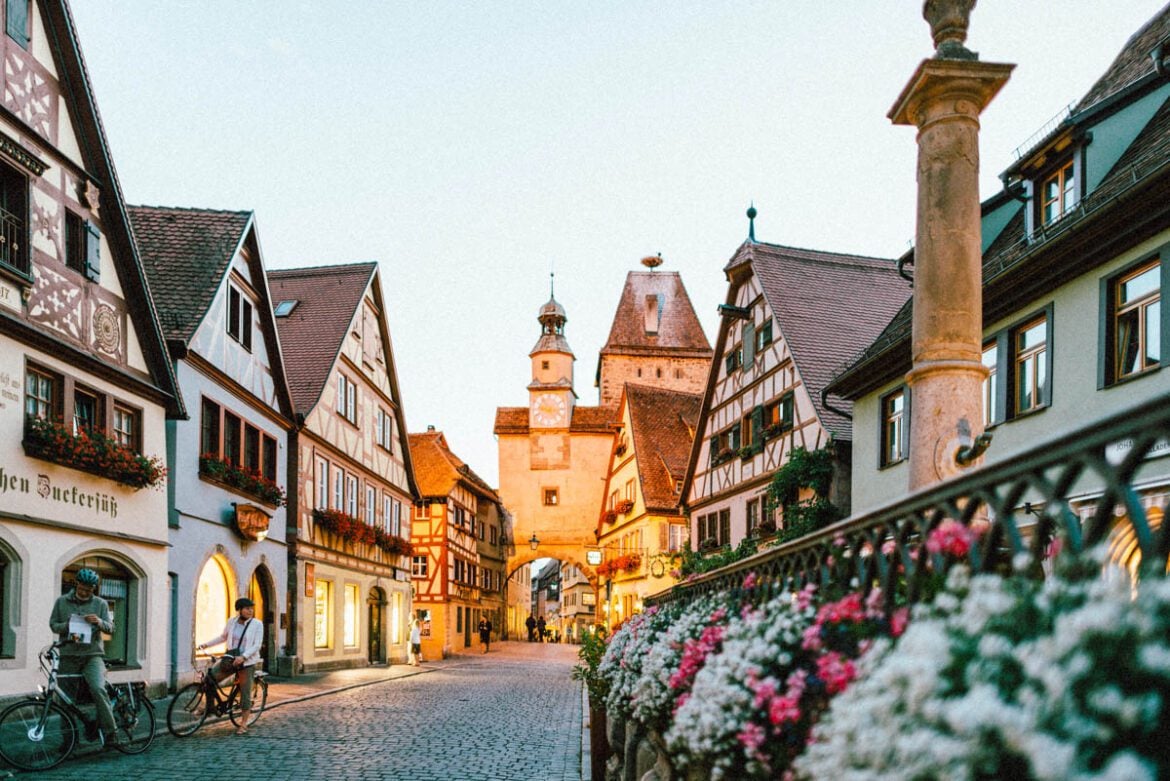Germany wasn’t love at first sight for me…it was more like a slow burn. I thought it’d be all serious business and strict rules, but nope. One minute I’m watching this giant medieval clock do its thing in Munich’s main square, and the next I’m at a beer garden learning and drinking songs from locals who feel like old friends. Ten visits later, let me tell you…this country knows how to have fun!
After checking out all the best things to do in Germany, from climbing up to that fairytale castle everyone knows from Disney (Neuschwanstein is even cooler in real life) to dancing in Berlin’s street festivals and Hamburg’s hidden taverns, I get why people love it here. Castles, forests, underrated cities – this country has it all! Forget what you think you know about Germany…let me show you why this country is way more than just beer and pretzels.
Bucket-List Things to Do in Germany
Visiting Germany? Spend the day exploring Schloss Neuschwanstein, learn about history at the Berlin Wall, or relax in the beautiful Erholungspark Marzahn. Discover the grandeur of Nymphenburg Palace or experience the magic of the Christmas Markets. Whether you’re into history, culture, or festive charm, Germany has plenty to offer.
Before you book anything, don’t miss these deals 👇
- ✈️ Find cheap flights you won't see on Google – Going.com finds mistake fares and flash sales I use to save $200+ per ticket
- 🏨 Book your stay – Great deals on boutique hotels, apartments and vacation homes
- 🚗 Score cheap car rentals – Compare top companies in one spot
- 🎟️ Explore top-rated tours and activities – Skip the line and explore more

1. Explore Schloss Neuschwanstein
Schloss Neuschwanstein looks like it was plucked straight from a storybook, but it’s very real…and even more stunning in person. Located near Füssen in Bavaria, this dramatic hilltop castle was commissioned by King Ludwig II, and it inspired Disney’s Sleeping Beauty castle.
Inside, you’ll find rooms themed after Richard Wagner’s operas, gilded ceilings, and panoramic windows overlooking alpine forests and lakes. Even the walk up from the base feels like an event, especially if you take the scenic Marienbrücke route for a killer view.
I visited on a foggy morning, and the clouds made the castle look like it was floating. I honestly didn’t expect to be that impressed, but standing in front of it was surreal. Whether or not you’re into castles, Neuschwanstein will win you over. Just be sure to book your tour in advance…it sells out fast, especially during peak season.

2. Hike the Saxon Switzerland National Park
Don’t let the name fool you…this place is 100% German. Tucked near the Czech border, Saxon Switzerland is packed with wild rock formations, forest trails, and epic lookouts like the Bastei Bridge. It’s a stone walkway that looks like it was built for giants, offering panoramic views over the Elbe River valley. You can hike short loops or spend a full day exploring the larger Malerweg Trail, one of Germany’s top long-distance hikes.
Best part? It’s only an hour from Dresden, making it an easy day trip in Saxony. Go early to beat the crowds and catch the morning mist curling through the cliffs. It’s peaceful, surreal, and hands-down one of my favorite places to hike in Europe.
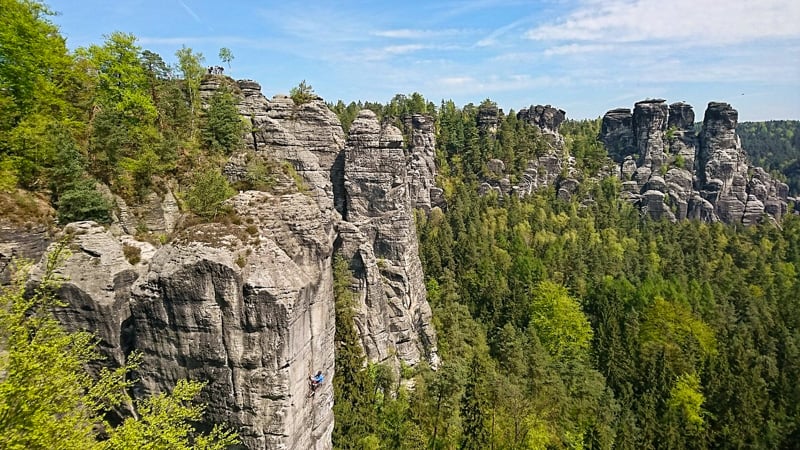
3. Catch sunset at Burg Eltz
Burg Eltz feels like it was plucked from the pages of a fantasy novel, and somehow, it’s still standing untouched after 850+ years. Tucked deep in the Moselle Valley forest, this fairytale castle rises out of the trees like a medieval dream.
Sunset is the best time to see it. As the golden light hits the stone towers and mist settles in the valley, it’s pure magic. You can hike in from the parking area (about 30–45 minutes), which adds to the experience. I love the fact that it has fewer crowds, better light, and that feeling of discovering something hidden.
If you’re into castles, photography, or just ridiculously atmospheric places, catching sunset at Burg Eltz is a must.
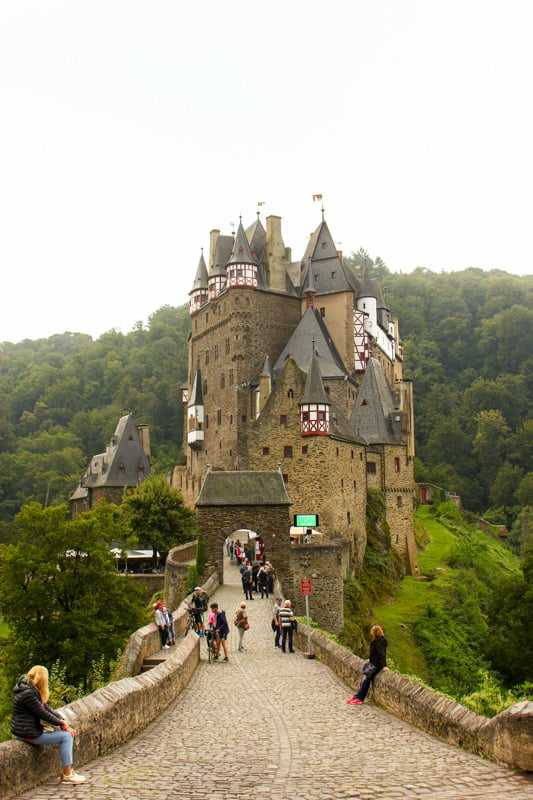
4. Visit the Berlin Wall & East Side Gallery
The Berlin Wall isn’t just a slab of concrete…it’s a powerful symbol of division, resistance, and reunification. You’ll find key remnants at the East Side Gallery, where over a kilometer of the wall has been transformed into an open-air art exhibit. Murals from artists all over the world turn this Cold War relic into something alive and expressive. Bernauer Strasse is another impactful stop, with a preserved section that shows just how intense life was along the border.
Walking the Wall gave me chills. I started at Checkpoint Charlie, and by the time I reached the memorials, the weight of history had sunk in. It’s heavy, yes, but unforgettable. If you’re in Berlin, even just for a short trip, this is something you really can’t skip. It offers one of the most honest, raw looks at Germany’s past.
✈️ Pro Travel Tip:
I use Going.com to find crazy flight deals...($300 roundtrip to Europe kind of crazy).
It’s free, and I honestly check it more than Google Flights. For a limited time only, they are offering 25% off on Premium and Elite to readers of my website, using my special code: JON25)

5. Take a Rhine River Cruise
Cruising the Rhine River feels like stepping into a storybook. This stretch between Koblenz and Bingen is packed with medieval castles, terraced vineyards, and pastel-colored villages like Bacharach and Rüdesheim. It’s the kind of place where every bend in the river reveals something new…a hillside fortress, a sunny vineyard, or a sleepy wine town begging you to stop and explore.
Hop on a day cruise or use the local KD line to ferry-hop between towns. Bring a jacket, grab a glass of Riesling on deck, and just soak it all in. It’s slow travel at its finest. If you’re into history, wine, or just ridiculously scenic views, a Rhine River cruise is one of the coolest ways to see Germany.

6. Take a spa day in Baden-Baden
Baden-Baden is where Germans go to unwind…and they do it right. This spa town at the edge of the Black Forest is famous for its natural thermal baths, centuries-old spa culture, and a splash of old-world luxury. Spend a day soaking in the mineral-rich pools at Friedrichsbad or Caracalla Spa, then rotate through saunas, steam rooms, and cold plunges like a pro.
It’s the kind of place where you stroll around in a robe, sip champagne between spa sessions, and forget what time it is. If you’re nursing sore muscles or just want a break from the road, a spa day in Baden-Baden will reset your whole vibe. Treat yourself…you deserve it!

7. Bike along Moselle Valley
Biking through the Moselle Valley is like pedaling through a postcard. This underrated region in western Germany is pure magic. Think rolling vineyards, riverside trails, and hilltop castles that look like they belong in a fantasy film. The ride between Cochem and Bernkastel-Kues is especially scenic, with plenty of cute wine villages to stop, sip, and snack.
The Moselradweg (Moselle Cycle Route) is mostly flat and super beginner-friendly, so you don’t need to be a hardcore cyclist to enjoy it. Rent an e-bike if you want to take it easy and still cover a lot of ground. Whether you’re cruising past castle ruins or pulling over for a glass of Riesling with a view, this ride delivers chill vibes and stunning scenery every mile.
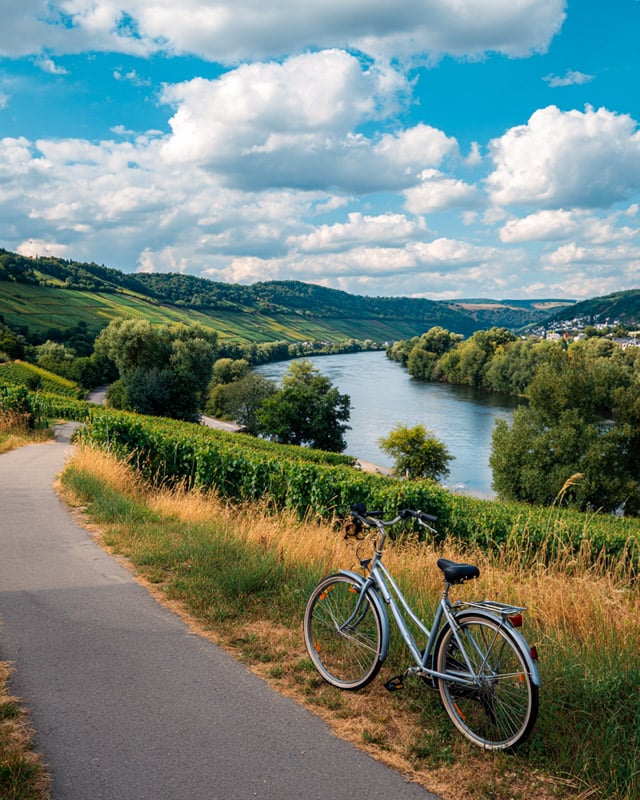
8. Explore the best of the Alps from Berchtesgaden
Berchtesgaden is one of the most epic base camps for exploring the German Alps. Surrounded by jagged peaks, emerald lakes, and postcard-worthy valleys, it’s packed with outdoor adventures and STUNNING views. You’ve got Königssee, one of Europe’s most beautiful lakes, right on your doorstep…plus the iconic Eagle’s Nest for panoramic mountain vistas with serious history.
Hike into Berchtesgaden National Park for alpine meadows and glacier-fed streams, or ride the Jennerbahn cable car for a high-altitude view without the sweat. Chase sunrises, waterfall trails, or just fresh mountain air in Berchtesgaden, and you’ll see why it’s the best launchpad in the Bavarian Alps. It’s wild, scenic, and 100% worth the trip.
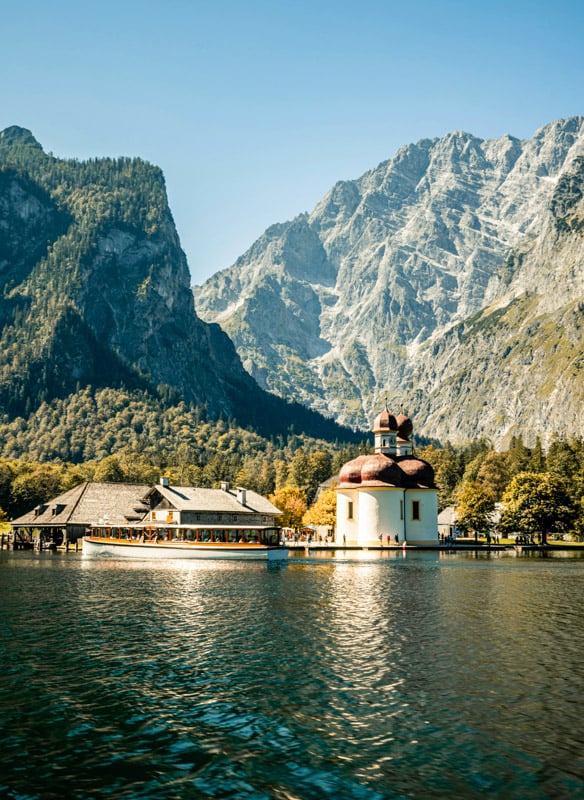
9. Relax in Erholungspark Marzahn in Berlin
If you need a break from Berlin’s high energy, head to Erholungspark Marzahn, also known as Gärten der Welt. It’s a massive park in the Marzahn-Hellersdorf district featuring ten beautifully designed gardens, each representing a different country—China, Japan, Korea, Italy, and more. There’s even a cable car that crosses the park, offering an aerial view of everything below. You’ll find peaceful paths, tea houses, floral displays, and quiet corners to relax without crowds.
I came here after a packed day in central Berlin, and it was exactly what I needed. The Japanese Garden, with its maple trees and stone lanterns, was my favorite—it felt like a full reset. Most tourists never make it this far east, which is part of its charm. If you want to slow down and still experience something culturally rich, this is one of Berlin’s most underrated spots.
- Read Next: Unique Bucket List Ideas

10. Walk through the Nymphenburg Palace in Munich
Baroque elegance meets royal history at The Nymphenburg Palace, one of Munich’s most impressive landmarks. Once the summer home of Bavaria’s royal family, this palace is absolutely massive—stretching over 700 meters across. Inside, rooms like the Great Hall are decked out with ceiling frescoes, chandeliers, and marble floors. Outside, the gardens cover nearly 500 acres and include canals, fountains, and smaller palaces like Amalienburg and Badenburg.
I visited on a crisp morning in late September and ended up spending hours just exploring the grounds. The Gallery of Beauties, with portraits of women from all walks of life, was surprisingly modern in feel. If you’re into architecture, history, or just want a less touristy palace experience than Versailles, this is it. Nymphenburg is easy to reach by tram and doesn’t feel overrun, even during peak season.

11. Check out Germany’s famous Christmas Markets
Looking to go somewhere cool for Christmas? Germany’s Christmas markets are on another level. From late November through December, city squares transform into festive wonderlands. The most iconic is the Christkindlesmarkt in Nuremberg, with 180+ stalls selling handcrafted gifts, ornaments, and local treats. Warm up with Glühwein (mulled wine), snack on Rostbratwurst, and don’t leave without grabbing some of Nuremberg’s famous gingerbread.
I visited on a snowy night and got hooked on the cinnamon smell that hits you as soon as you arrive. I wandered with a hot mug in hand, picked up a few wooden ornaments, and watched kids ride the carousel. It’s touristy, sure…but worth it. Other great markets include Dresden Striezelmarkt and Cologne’s Cathedral Market. Each one has its own vibe, but they all offer that cozy, magical atmosphere that makes winter travel feel like a holiday movie set.
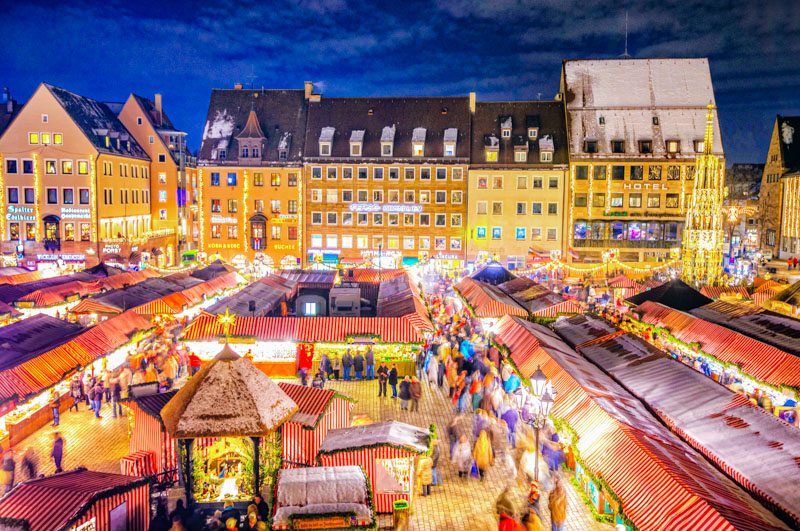
12. Experience the magic of Nuremberg
Nuremberg is packed with history—some charming, some heavy—but all of it worth diving into. The city’s Old Town is filled with medieval buildings, cobbled streets, and the impressive Imperial Castle perched on a hill. But the real draw is the Documentation Center Nazi Party Rally Grounds, a sobering look at the country’s past. The Memorium Nuremberg Trials lets you stand in the actual courtroom where justice was served.
The first time I visited, I didn’t expect to be that moved. I spent an hour just sitting outside the Zeppelinfeld, trying to take it all in. Nuremberg doesn’t sugarcoat history, but it also doesn’t get stuck in it. Between thought-provoking museums and cozy beer halls in the Old Town, the city strikes a powerful balance. If you want a destination that’s both beautiful and meaningful, this one stands out.

13. Party at Oktoberfest in Munich
If there’s one event Germany is famous for, it’s Oktoberfest. This was my first visit to Germany in a nutshell…wayyy back in 2014. Held every fall in Munich, this two-week festival draws millions to celebrate beer, Bavarian culture, and good times. Locals and tourists pack the massive tents like Hofbräu-Festzelt and Schottenhamel, where servers haul liters of beer like it’s nothing. There’s live oompah music, dancing on benches, and classic food like giant pretzels and Weisswurst.
I went with friends and didn’t expect it to be that organized—or that fun. We booked a table in advance and ended up singing with strangers like old pals. It’s not all about beer either—there’s a huge fairground with rides and games. If you’re going, wear traditional gear (Dirndl or Lederhosen) and learn to say “Prost!” If you love festivals, Oktoberfest delivers on energy, culture, and unforgettable memories.

14. Explore Museum Island in Berlin
Museum Island is one of the coolest cultural spots in Berlin. It’s five legendary museums packed onto a small island in the middle of the Spree River. I spent a full day here and still want more. The Pergamon Museum is the standout, home to the massive Pergamon Altar and the Ishtar Gate from ancient Babylon.
Just steps away, you’ve got the Neues Museum with its Egyptian collection (hello, Nefertiti), and the Altes Museum, which feels like an ancient temple itself. The vibe is chill but impressive…grand architecture, massive exhibits, and quiet courtyards perfect for a coffee break between galleries. Nearby, you’ll want to check out Berlin’s coolest restaurants. It’s one of those rare places that actually lives up to the hype.
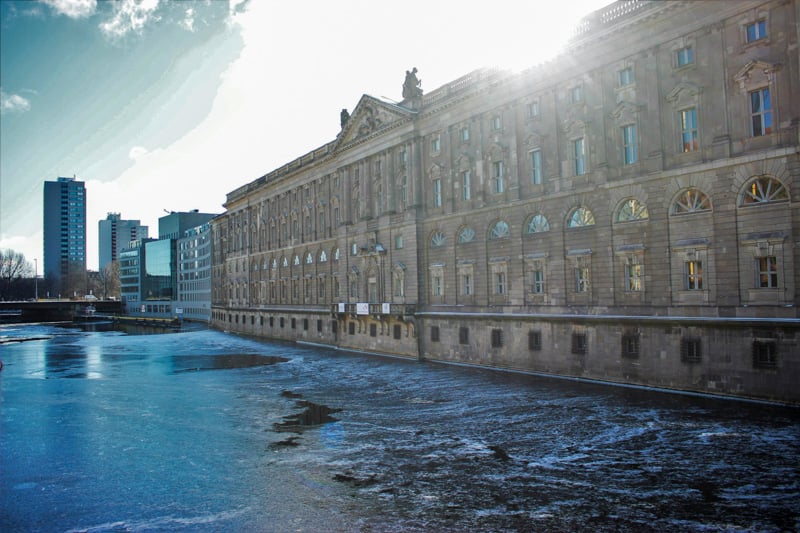
15. Lose your heart in Heidelberg (like I did)
I love Heidelberg. There’s a famous German expression- “Ich hab mein Herz in Heidelberg verloren” (I lost my heart in Heidelberg), and after 2 visits…it definitely rings true!
Heidelberg blends storybook charm with deep academic roots, making it one of Germany’s most picturesque cities. The Old Town is full of narrow cobbled lanes, baroque buildings, and traditional taverns. Walk across the Old Bridge or climb up to the Heidelberg Castle, which overlooks the city and houses the world’s largest wine barrel. The view alone is worth the hike…or take the funicular if you’re feeling chill.
When I visited, I spent hours just wandering through side streets and people-watching in the main square. The vibe is romantic but not overdone. Be sure to walk the Philosopher’s Way, a scenic path once used by university thinkers, with panoramic views of the town below. Between the castle ruins and riverside cafes, Heidelberg hits that perfect mix of beauty, history, and local life without feeling touristy.

16. Cruise the Romantic Road
The Romantic Road is a scenic drive that runs from Würzburg to Füssen, linking medieval towns, vineyards, and epic castles. It’s one of Germany’s most beloved routes for a reason. You’ll pass through places like Rothenburg ob der Tauber, famous for its timber-framed houses, and Dinkelsbühl, which is just as pretty but less crowded. The final stop? The iconic Neuschwanstein Castle, perched above the Alps.
I rented a car for this trip and ended up stopping way more than planned…each town looked like a movie set. In Wieskirche, I walked into a small Rococo church and was floored by the interior. Whether you’re in it for the architecture, the food, or just the countryside views, the Romantic Road makes for one of the most laid-back and visually stunning ways to explore southern Germany.
- Read also: My Ultimate Romantic Road Itinerary

17. Explore Lübeck’s Hanseatic history
Lübeck is one of northern Germany’s coolest under-the-radar cities. Once the crown jewel of the Hanseatic League, it’s now a UNESCO World Heritage Site filled with medieval charm and red-brick Gothic architecture. Stroll through the old town’s cobblestone streets, pass under the iconic Holstentor Gate, and pop into historic churches like St. Mary’s or St. Peter’s for rooftop views.
But here’s the twist…Lübeck is also the marzipan capital of the world. Stop by Niederegger Café for a slice of marzipan cake or some creative almond-based sweets. It’s weirdly good.
If you’re like me and you love history, architecture, or sweet treats, Lübeck has a mix of culture and charm that’s hard to beat.
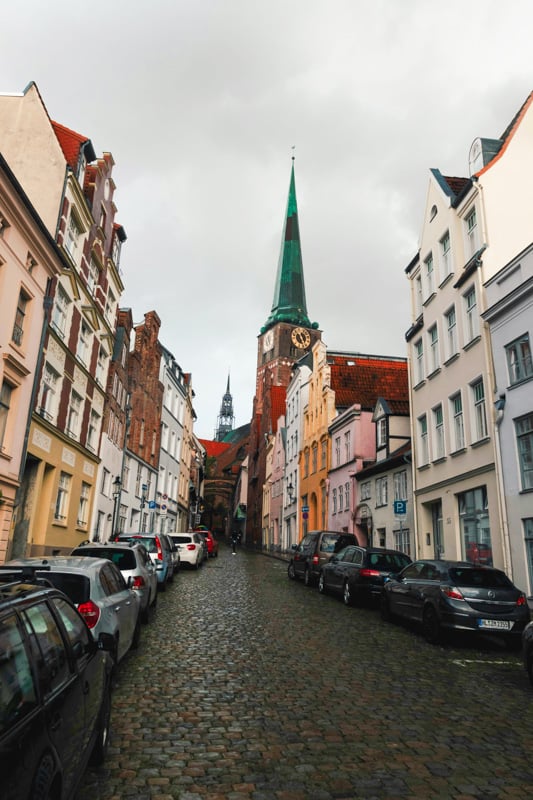
18. Explore Frankfurt’s old and new sides
Frankfurt makes a great base for exploring the rest of Hessen…a region filled with fairytale towns, rolling hills, and historic gems most travelers miss. Start in the city by strolling from the half-timbered charm of Römerberg to the sleek skyscrapers of the financial district. Grab a glass of Apfelwein in Sachsenhausen, then hit the Städel Museum or cruise the Main River at sunset.
When you’re ready to escape the city, day trips are easy. Head to Marburg for castle views and medieval streets, or visit Limburg with its striking hilltop cathedral. Nature lovers can hike or unwind in the Taunus Mountains, just an hour away.
This part of Germany doesn’t always get the spotlight…but it should. Here’s my guide to the most beautiful places in Hessen if you’re ready to dig deeper into the good stuff.
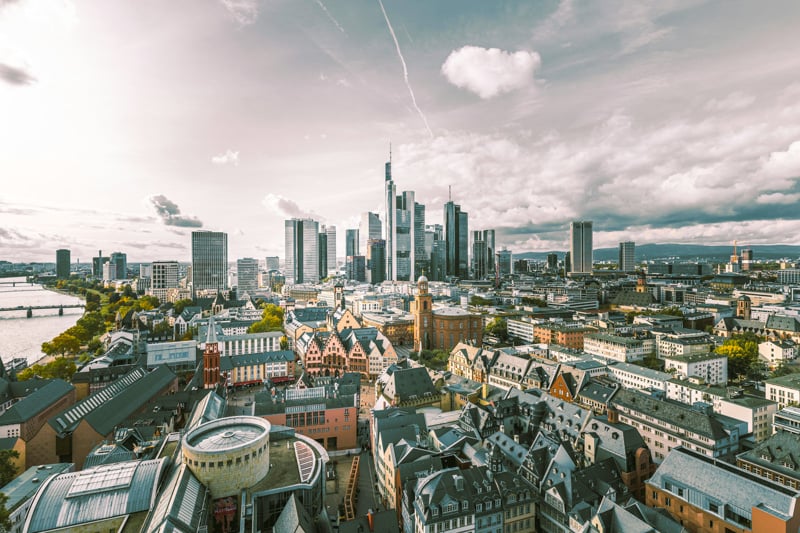
19. Hike the Rennsteig Trail through Thuringia
The Rennsteig is Germany’s oldest long-distance hiking trail…and easily one of its most scenic. Winding over 170 km through the Thuringian Forest, it feels like a fairytale come to life: mossy pines, panoramic ridgelines, and the occasional rustic hut serving beer and bratwurst to hikers.
You don’t need to hike the whole thing to experience the magic. Even a short day trek near Oberhof or along the Großer Inselsberg gives you a taste of that peaceful, storybook landscape. It’s quiet, authentic, and way off the beaten tourist path.
Looking for more gems like this? Here’s my guide to the most beautiful places in Thuringia…full of castles, trails, and charming towns you’ve probably never heard of (but should).
20. Visit Germany’s UNESCO World Heritage Sites
Germany has 50+ UNESCO World Heritage Sites, and they’re more diverse than you’d expect. There’s everything from natural wonders like the Wadden Sea to industrial relics like the Zollverein Coal Mine in Essen. If you’re into history, head to Cologne Cathedral…a towering Gothic masterpiece that took centuries to complete. Or explore the Palaces and Parks of Potsdam and Berlin, where Prussian kings once roamed.
I didn’t plan to hit any UNESCO sites on my first trip, but I stumbled into Bamberg and was hooked. The old town is preserved so well, it feels like time travel. Whether it’s castles, forests, or historic city centers, these sites let you experience the depth of German culture in totally different ways. Each one tells its own story—and you don’t need to be a history nerd to appreciate them.

21. Rugen Island
Located in the Baltic Sea, Rügen Island is Germany’s largest island and a total surprise if you’re expecting only castles and cities. Its star attraction is Jasmund National Park, home to the towering white chalk cliffs at Königsstuhl. The island also has long sandy beaches, seaside resorts like Binz and Sellin, and cool relics like old fishing villages and lighthouses at Cape Arkona.
I took the old steam train Rasender Roland across the island and felt like I’d stepped into another era. The mix of forests, coastlines, and vintage charm makes it feel like Germany’s version of Cape Cod. Whether you’re hiking the cliffs or relaxing at a beachside spa, Rügen gives you that slower, coastal vibe with a side of history. It’s a great spot if you want nature without leaving the country.

FAQs about the Coolest Things to Do in Germany
Looking for more ideas on amazing things to do in Germany? Here are some popular questions (and answers) I get that will help you plan your trip:
What is the number 1 tourist spot in Germany?
Germany’s #1 tourist attraction is Neuschwanstein Castle in Bavaria, which consistently ranks as the top destination and receives over 1.6 million visitors annually. This fairytale 19th-century castle sits dramatically on a rocky hill and inspired Disney’s Sleeping Beauty Castle. Built by King Ludwig II, it features stunning Romanesque Revival architecture against a backdrop of Alpine scenery. Located near the town of Füssen, the castle offers guided tours through its ornate interior rooms and provides breathtaking views of the surrounding Bavarian landscape, making it Germany’s most iconic and photographed landmark.
When is the best time to visit Germany?
Germany is a year-round destination, but the best time to visit depends on your preferences. If you’re a fan of warm, sunny weather and outdoor activities, consider visiting between May and September. For winter sports enthusiasts, the months from December to February are ideal. Meanwhile, if you want to experience Germany’s famous Christmas markets, plan your visit for late November through December.
Is Germany expensive to visit?
While Germany is not the cheapest European destination, it offers good value for money compared to some other Western European countries. Accommodation, food, and transportation costs can vary widely depending on the region and the level of luxury you seek. Generally, cities like Berlin and Munich tend to be more expensive, while smaller towns and rural areas can be more affordable.

Do I need to know German to visit Germany?
While it’s always helpful to know some basic phrases in the local language, it’s not essential for a trip to Germany. English is widely spoken, especially in larger cities and tourist areas. However, learning a few German phrases can enhance your travel experience and is often appreciated by locals.
Is 7 days in Germany enough?
7 days is enough for a focused Germany trip but not comprehensive. You can cover 2-3 major cities (Berlin, Munich, plus one other) or one region thoroughly. Skip trying to see everything – pick either the historic/cultural route (Berlin, Dresden, Nuremberg) or the Bavarian highlights (Munich, Neuschwanstein, Rothenburg).
With good planning, you’ll get a solid taste of German culture, history, and cuisine. Just don’t expect to cover the entire country – Germany is larger than most people realize. As such, make sure to account for travel time in your itinerary.
What is the food like in Germany?
German cuisine is hearty and diverse, with regional variations. Some of the must-try dishes include Bratwurst (German sausage), Pretzels, Sauerbraten (pot roast), and Sauerkraut. Germany is also famous for its beer, with a variety of styles and flavors to try, especially in Bavaria.
What is Germany best known for?
Germany is renowned for its rich cultural heritage, with a history that has given rise to majestic castles, Gothic cathedrals, and quaint half-timbered houses. It’s also famous for its precision engineering, manifested in world-class automobiles like BMW and Mercedes-Benz, and its vibrant beer culture, with Oktoberfest being a globally recognized event.
How to spend 10 days in Germany?
A 10-day trip in Germany could start in the vibrant city of Berlin, soaking up its rich history and modern culture. Then, you’ll want to move on to the picturesque Romantic Road, stopping by Rothenburg ob der Tauber and Neuschwanstein Castle. The journey could end in Munich, with a visit to the Nymphenburg Palace, a stroll in the English Garden, and of course, a taste of traditional Bavarian beer in one of the city’s famous beer gardens.

Need help planning your trip? Check out these helpful links:
- ✈️ Find cheap flights – I save $10k per year on flights thanks to this tool
- 🏨 Book accommodations – My favorite platform for boutique hotels and budget stays
- 🚗 Compare rental car prices – Great rates from trusted companies
- 🎟️ Discover affordable tours and day trips – Skip the line and explore more


